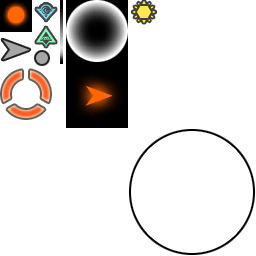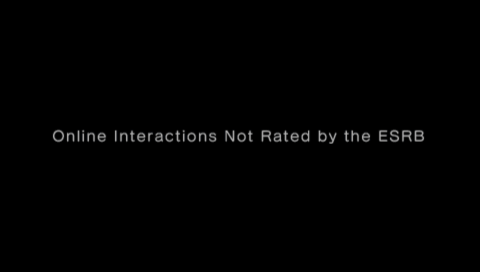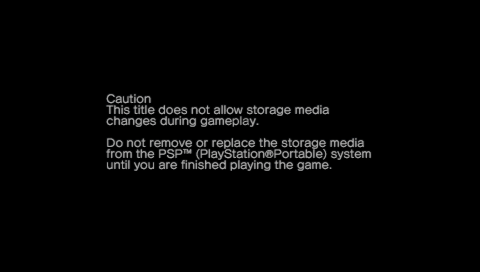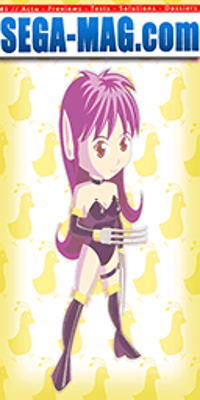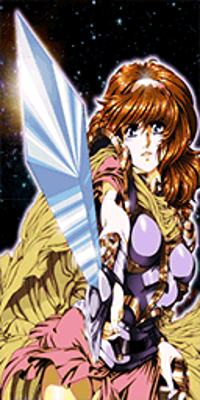Phantasy Star Portable 2
| Phantasy Star Portable 2 |
|---|
|
Developer: Alfa System
|
| This article is a work in progress. ...Well, all the articles here are, in a way. But this one moreso, and the article may contain incomplete information and editor's notes. |
Phantasy Star Portable 2 is the sequel to Phantasy Star Portable and the grand finale to the Phantasy Star Universe sub-series. Unlike the previous game, Portable 2 supports online multiplayer in addition to Ad-Hoc.
| To do: See if the game has any unused content and get JP collaboration list. |
Unused Graphics
Unused Sonic Team Splash Screen
In the same texture sheet used for the game's startup splash screens is an unused one for Sonic Team.
Demo Version Leftover
In the title screen's texture sheet area is a graphic previously used in the PSN demo's title screen.
Phantasy Star Portable Mission Counter Leftovers
A texture containing the graphical assets used in the quest counter in Phantasy Star Portable is present.
Unfinished Localization
The file containing strings for "My Room" has various language variants (using the same language coding other Sonic Team games use) which hint that the game was originally planned to be localized into languages other than English:
MyRoomText_S.bin MyRoomText_K.bin MyRoomText_J.bin MyRoomText_I.bin MyRoomText_G.bin MyRoomText_F.bin MyRoomText_CT.bin MyRoomText_CS.bin MyRoomText_BE.bin MyRoomText_AE.bin
Most of these files are empty, though the files for the German and French versions of the file show an unfinished translation attempt. It should also be noted that this is one of the few times that the Japanese string file is present in the international versions.
Regional Differences
SEGA Logo
| Japan | International |
|---|---|
 |
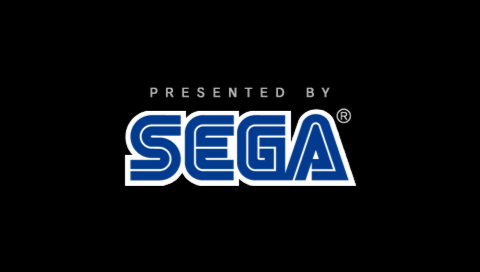 |
As is common with many western releases of Sega games, the light-blue Sega logo used in Japan was replaced with the dark-blue version used by Sega of America and Sega Europe.
ESRB Warning
The North American release adds an "Online Interaction not rated by the ESRB" startup notice that is not present in any other version of the game.
Storage Medium Warning
After all the startup logos, the international versions add an extra warning prior to the title screen.
Title Screen
| Japan | International |
|---|---|
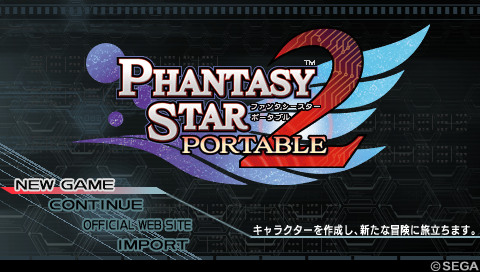 |
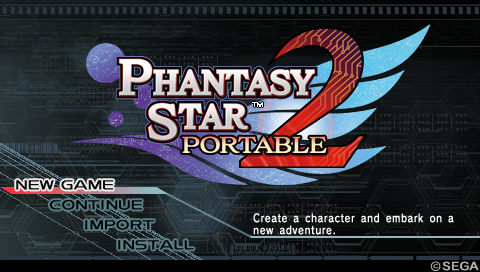 |
All instances of the game's logo (including the opening cinematic) does not feature the Katakana spelling of the game's name alongside the logo. The option to go to the official website was also removed in the international versions.
Import Menu
| Japan | International |
|---|---|
 |
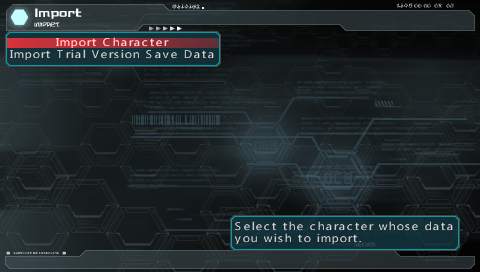 |
The option to import items bought off the PSN Store was removed due to the DLC remaining exclusive to the Japanese version.
Mode Select
| Japan | International |
|---|---|
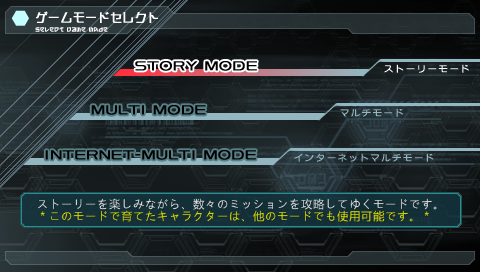 |
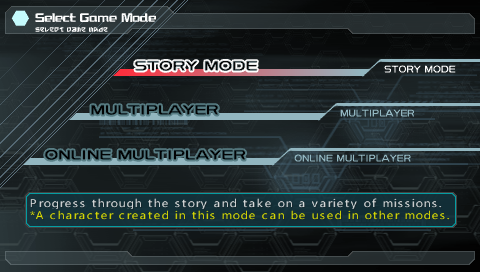 |
The English text for "Multi-Mode" and "Internet-Multi Mode" were altered to "Multiplayer" and "Online Multiplayer" respectively.
Ingame Tutorials
| Japan | International |
|---|---|
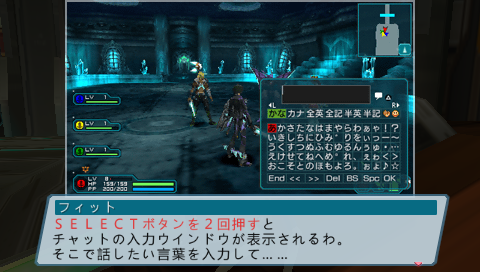 |
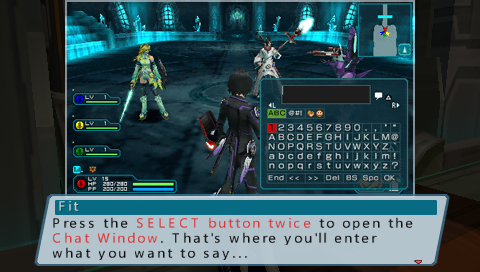 |
Most of the screenshots used for the game's tutorials were re-taken using the international versions.
Voices
Similar to Phantasy Star Universe: Ambitions of the Illuminus, Phantasy Star Portable 2 had a partial English dub made. The FMVs and voice grunts were dubbed into English, but the text cutscenes were simply muted.
Weapon Upgrade
In the Japanese version, the Weapon Upgrade system had the stat increment based on the weapon's Grade, with higher-graded weapons having their upgrade stats increment by more than lower-graded weapons. In the western versions, all weapons belonging to the same weapon category have their stats increment by the same amount regardless of their grade.
Furthermore, the overall value by which stats increment had been increased in the western versions.
Japanese Collaborations
| This page or section needs more images. There's a whole lotta words here, but not enough pictures. Please fix this. |
The Japanese version had various events and items based around other brands and franchises. Due to licensing issues, some of these items could not make it to the western releases. As a result, items were either removed entirely, re-skinned, or outright replaced with new items made specifically for the western versions.
Weekly Young Jump
In Japan, Sega partnered with Weekly Young Jump to produce five in-game posters featuring Japanese gravure idols. Due to licensing issues, Sega of America announced that they would hold an art contest to design new posters that would replace the Japanese ones:
Interestingly, data for the other two posters are still present in the international versions, however their description simply reads "Del" and their texture defaults to either the one used for "Rappy of Hope" (for Photo4) or "Memoir of a Legend" (for Photo5).
Famitsu
| To do: Find out what the international versions' replacement for the Famitsu magazine weapon is. |
As was the case with past Phantasy Star Online titles, a magazine collab in the form of a "joke weapon" is present. The collab here was with Famitsu magazine. The international versions has the weapon rebranded to one more familiar outside of Japan.
Item Codes
The game has a system wherein players could obtain special items by inputting a special code into the "Visiphone" terminal found in the player's room. All the Item Codes were changed in the game's western localization and some items in this system (as is the case with collaboration items that were unable to make it to the west) were removed and replaced with other items.
DLC
In Japan, the game offered two different kinds of DLC: one kind was through the PSN Store and allowed players to download new weapons, costumes, accessories, etc. The other kind was Downloadable Missions, which were distributed through the game's website in batches.
None of the DLC was ever released outside of Japan in any official capacity, though the Downloadable Missions' exclusive item drops were made into regular in-game drops. The missions themselves are compatible with the international versions, though.
The Phantasy Star series
| |
|---|---|
| Master System | Phantasy Star |
| Genesis | Phantasy Star II (Localization Prototype) • Phantasy Star III: Generations of Doom • Phantasy Star IV: The End of the Millennium (Localization Prototypes) |
| PlayStation 2 | Sega Ages 2500 Series Vol. 17: Phantasy Star generation:2 • Sega Ages 2500 Series Vol. 32: Phantasy Star Complete Collection |
| Phantasy Star Online | |
| Dreamcast | Phantasy Star Online |
| GameCube | Phantasy Star Online Episode I&II • Phantasy Star Online Episode III: C.A.R.D. Revolution (Prototype) |
| PlayStation 2 | Phantasy Star Universe |
| Nintendo DS | Phantasy Star 0 |
| PlayStation Portable | Phantasy Star Portable • Phantasy Star Portable 2 |
| PlayStation Vita | Phantasy Star Nova |
| Xbox 360 | Phantasy Star Universe |
| Windows | Phantasy Star Online • Phantasy Star Universe • Phantasy Star Online 2 • Phantasy Star Online 2: New Genesis |
- Pages missing developer references
- Games developed by Alfa System
- Pages missing publisher references
- Games published by Sega
- PlayStation Portable games
- Pages missing date references
- Games released in 2009
- Games released in December
- Games released on December 3
- Games with unused graphics
- Games with unused text
- Games with regional differences
- Works In Progress
- To do
- Needs more images
- Phantasy Star series
Cleanup > Needs more images
Cleanup > Pages missing date references
Cleanup > Pages missing developer references
Cleanup > Pages missing publisher references
Cleanup > To do
Cleanup > Works In Progress
Games > Games by content > Games with regional differences
Games > Games by content > Games with unused graphics
Games > Games by content > Games with unused text
Games > Games by developer > Games developed by Alfa System
Games > Games by platform > PlayStation Portable games
Games > Games by publisher > Games published by Sega
Games > Games by release date > Games released in 2009
Games > Games by release date > Games released in December
Games > Games by release date > Games released in December > Games released on December 3
Games > Games by series > Phantasy Star series


